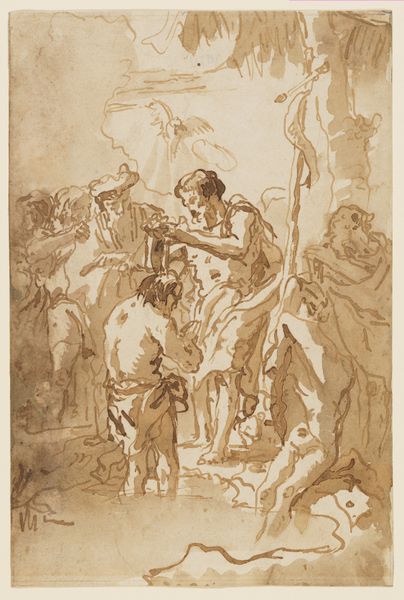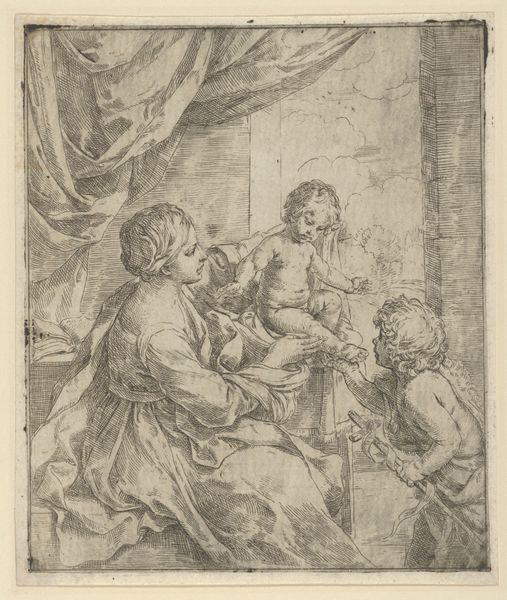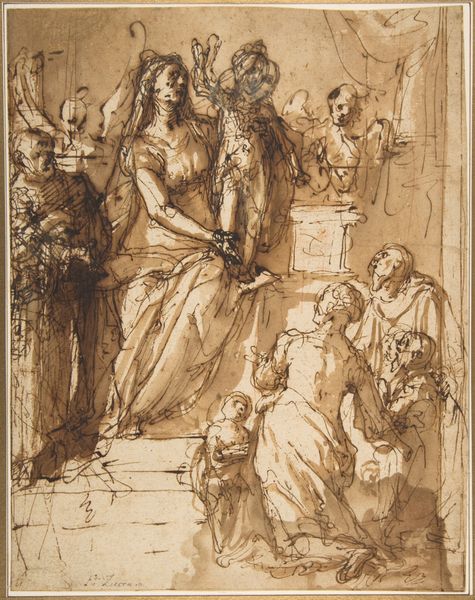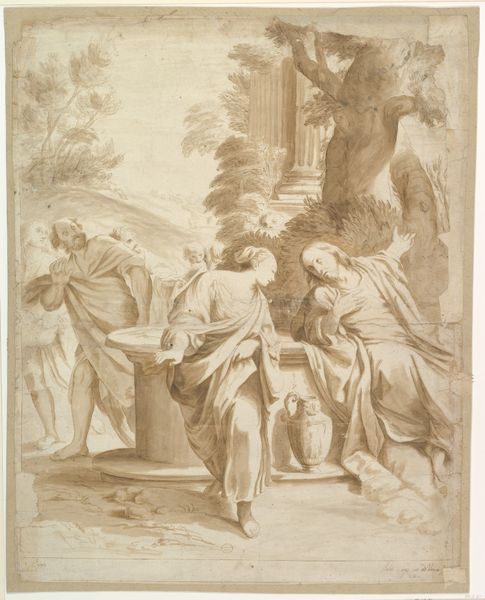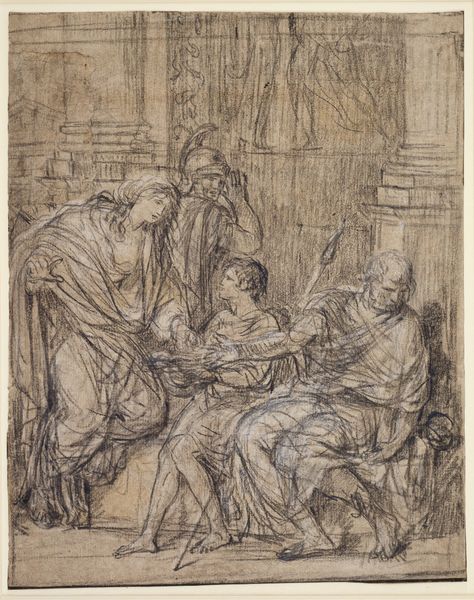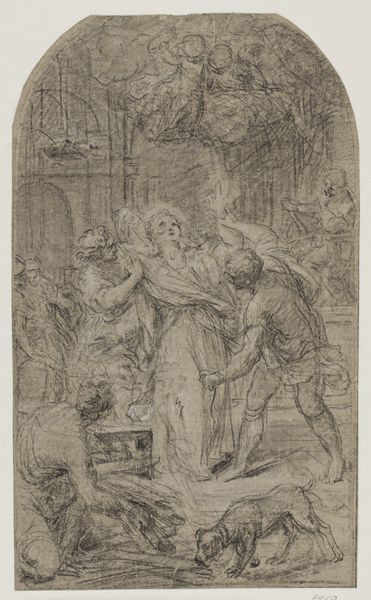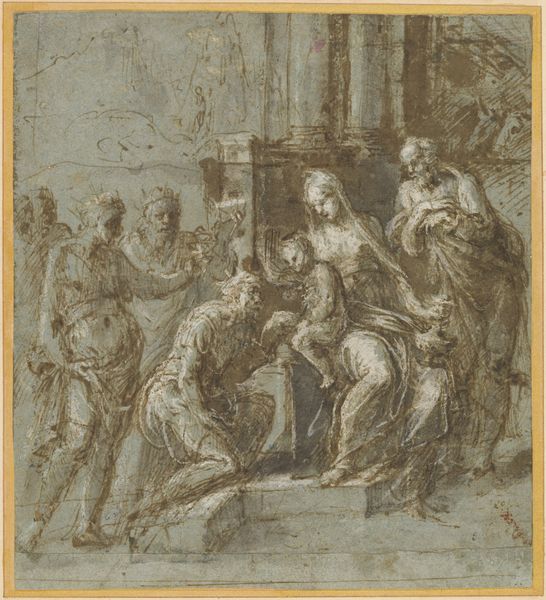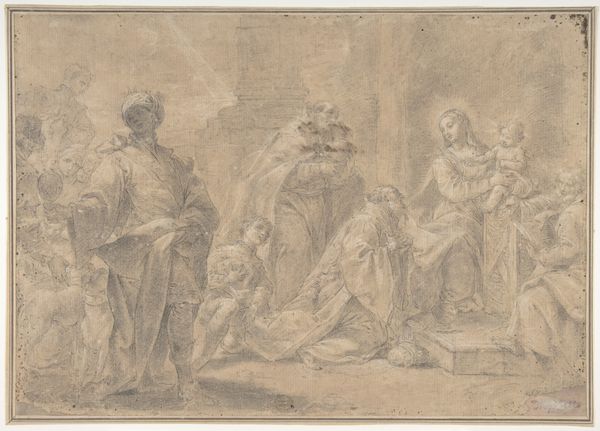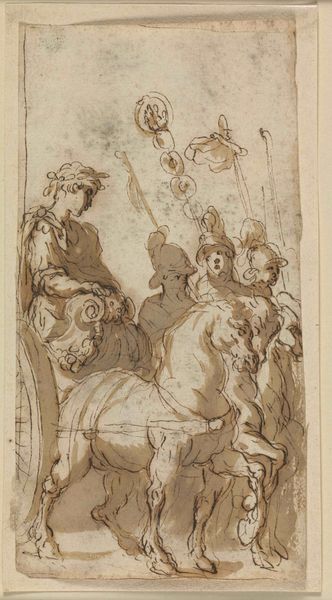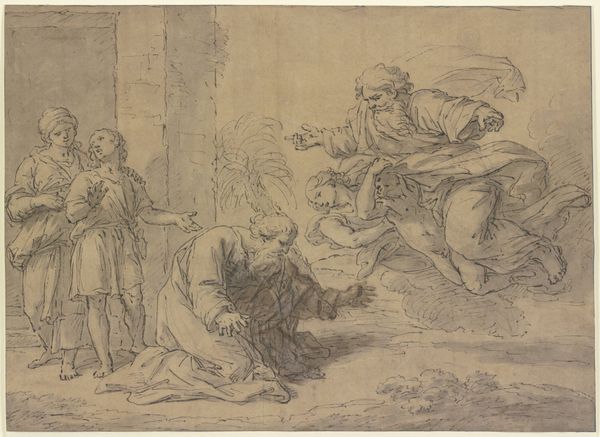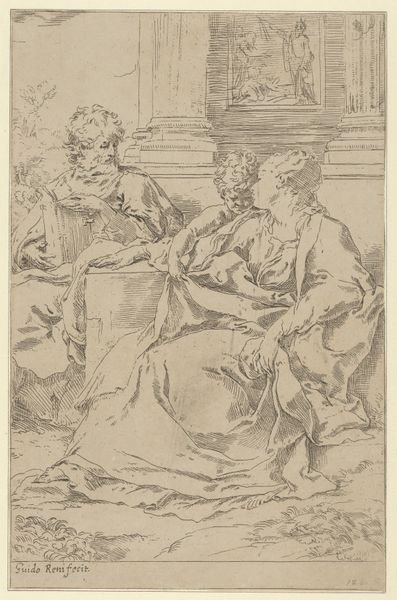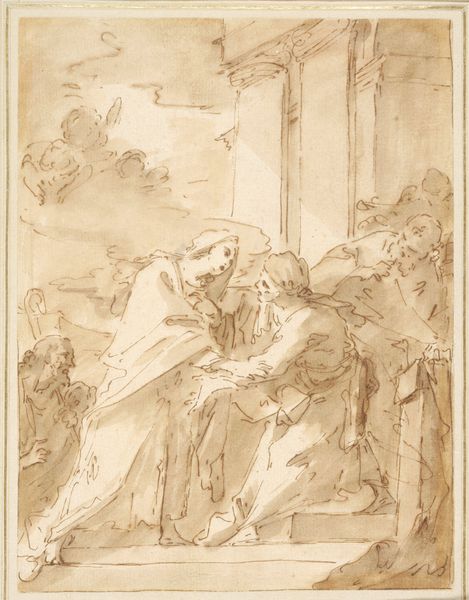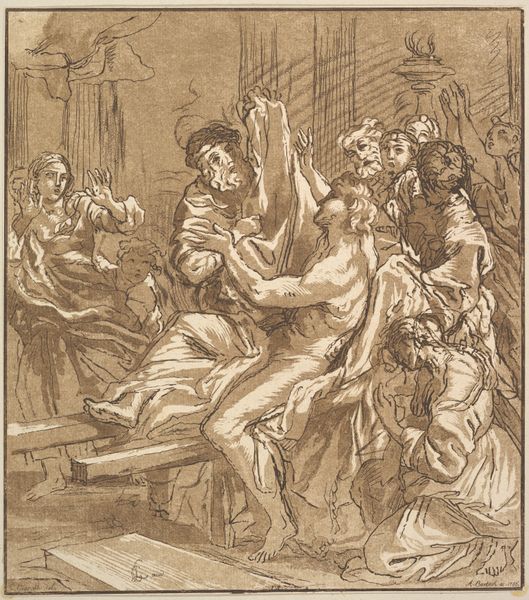
Christ in the House of Martha and Mary 1690 - 1753
0:00
0:00
drawing, print, pencil
#
drawing
#
baroque
# print
#
figuration
#
pencil
#
history-painting
#
christ
Dimensions: 7 11/16 x 5 15/16 in. (19.6 x 15.1 cm)
Copyright: Public Domain
Editor: We’re looking at "Christ in the House of Martha and Mary," a drawing using pencil and print techniques by Ferdinand Pierre Joseph Ignace Delamonce, created sometime between 1690 and 1753. The composition seems dynamic, yet subdued. What stands out to you in terms of its interpretation? Curator: I'm immediately drawn to the gridded lines visible underneath the drawing, hinting at the underlying processes. This pushes us to consider how the artist was working and how they considered material limitations. The preliminary drawing could have been a print before he started working on it. The drawing itself becomes both a historical artifact but also exposes the economic realities surrounding artistic production at the time. Are we looking at preliminary sketches for something larger? Was the end goal the drawing or reproduction? Editor: That’s fascinating, thinking about the production process rather than just the subject matter. So, the fact that we see the grid implies something about Delamonce's method and intention? Curator: Exactly. How was artistic knowledge disseminated? Who had access to this kind of representation, this particular narrative? Notice the materials used: readily available pencils and printmaking techniques, tools used for broader consumption than oil paints, for instance. These decisions would determine its accessibility to society. Was Delamonce, perhaps, deliberately democratizing access through material choice? Editor: It hadn't occurred to me to consider the materials as democratizing. It changes the perspective away from solely aesthetic value. Curator: It demands we shift our perspective. This forces us to examine art beyond beauty. To ask who had the means to produce, circulate, and consume. Think about the historical context of production. The labor, consumption and cultural beliefs interwoven with artistic practice are right there, embedded in the visual elements. Editor: Seeing the work this way, as a product of labor and economic context, really enriches my understanding of its role and relevance at the time. Curator: Indeed, and in turn it pushes us to re-evaluate the stories we tell today about artists and their work.
Comments
No comments
Be the first to comment and join the conversation on the ultimate creative platform.
